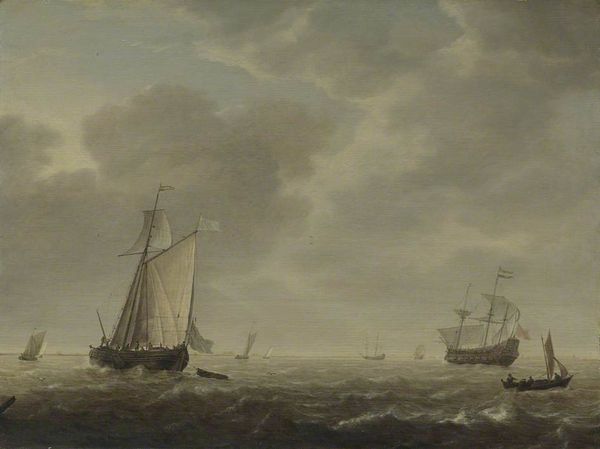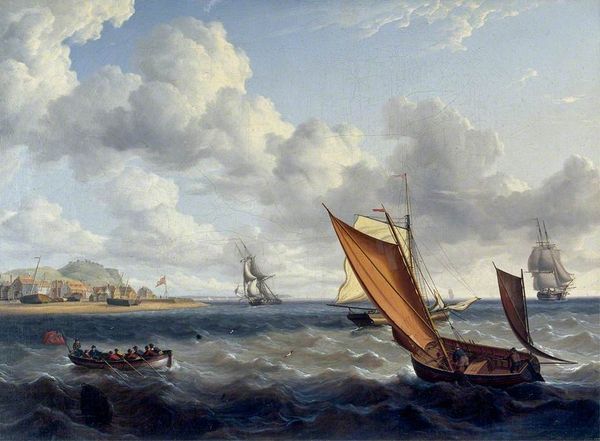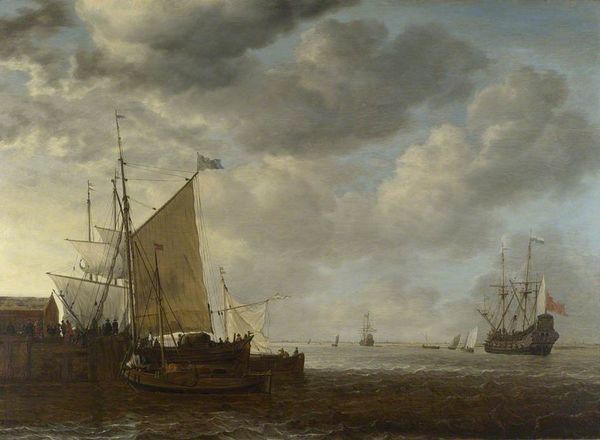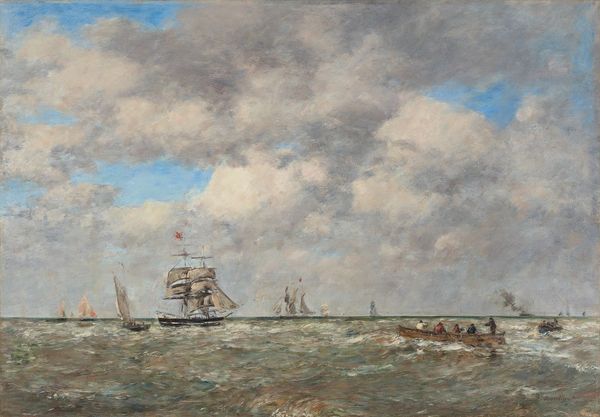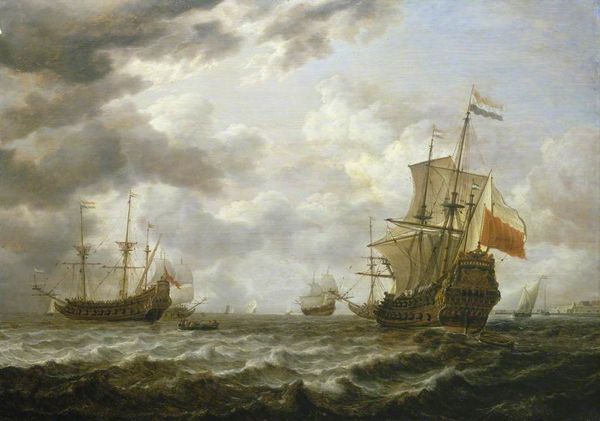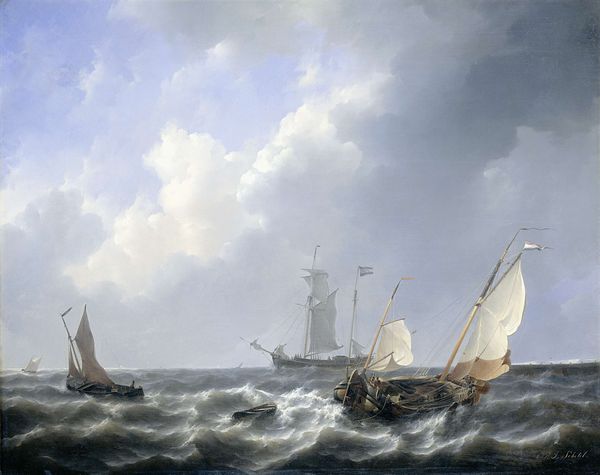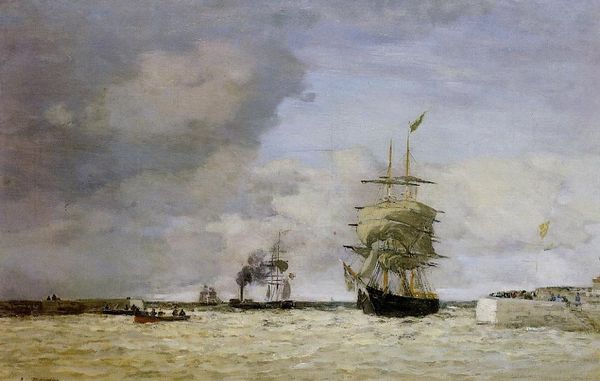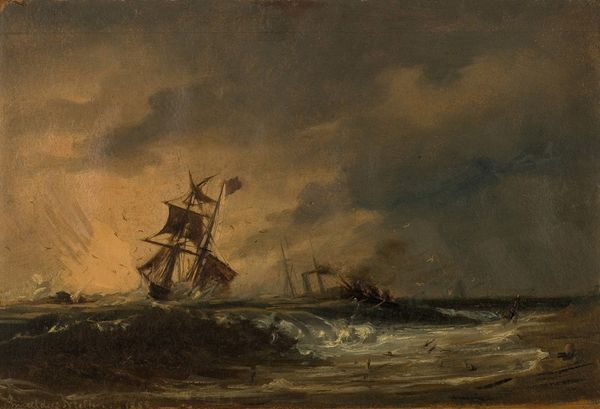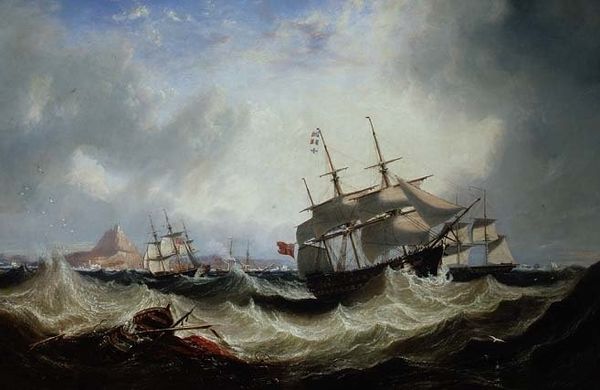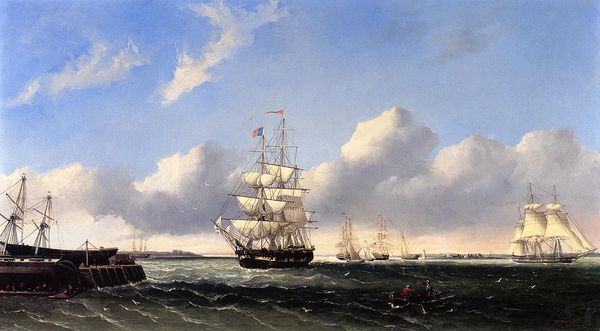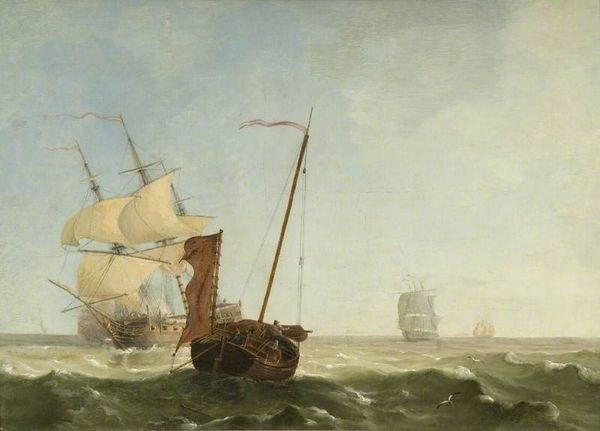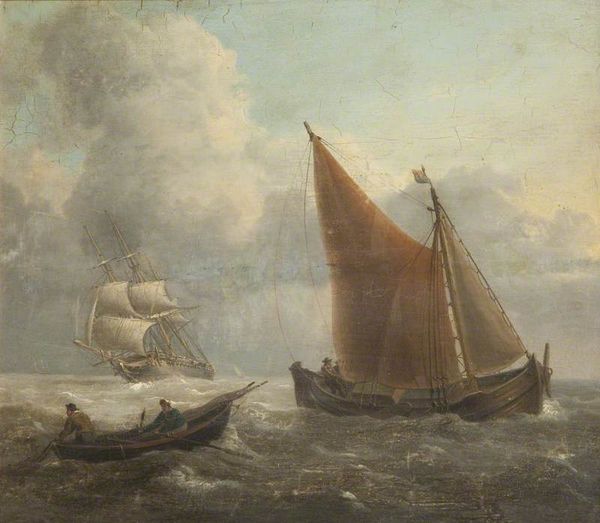
painting, plein-air, oil-paint
#
boat
#
ship
#
painting
#
plein-air
#
oil-paint
#
vehicle
#
landscape
#
oil painting
#
romanticism
#
seascape
#
water
Copyright: Public domain
Editor: This is John Wilson Carmichael's "Shipping off Seaham," painted in 1843. The way the light catches the crests of the waves makes the whole scene feel so dynamic and dramatic! How would you interpret this work, especially focusing on its formal qualities? Curator: Consider how the artist articulates the dynamism of the seascape primarily through contrasting textures. The impasto of the turbulent waves immediately juxtaposes with the relatively smooth rendering of the sky. What compositional effects does this create? Editor: The rough texture of the waves really brings them forward. It creates depth because the background looks smoother and further away. Curator: Precisely. Observe too, the use of diagonals created by the ships’ masts and sails, mirroring the movement of the clouds, creating a cohesive compositional rhythm. How does the tonal range influence your experience? Editor: The contrast between light and shadow must enhance the drama and draws the eye to specific focal points. Are these vessels' placements also a crucial compositional strategy? Curator: Assuredly. Their strategic placements and arrangement structure visual pathways through the piece, engaging our eye in a choreographic dance. Note the formal harmony uniting natural elements with those of human manufacture and engineering. Editor: That's fascinating. Focusing on the formal elements really helps to appreciate how everything comes together to make this more than just a picture of boats at sea. Curator: Indeed. This piece becomes a study of visual dynamics orchestrated by contrast, depth and compositional structures.
Comments
No comments
Be the first to comment and join the conversation on the ultimate creative platform.
